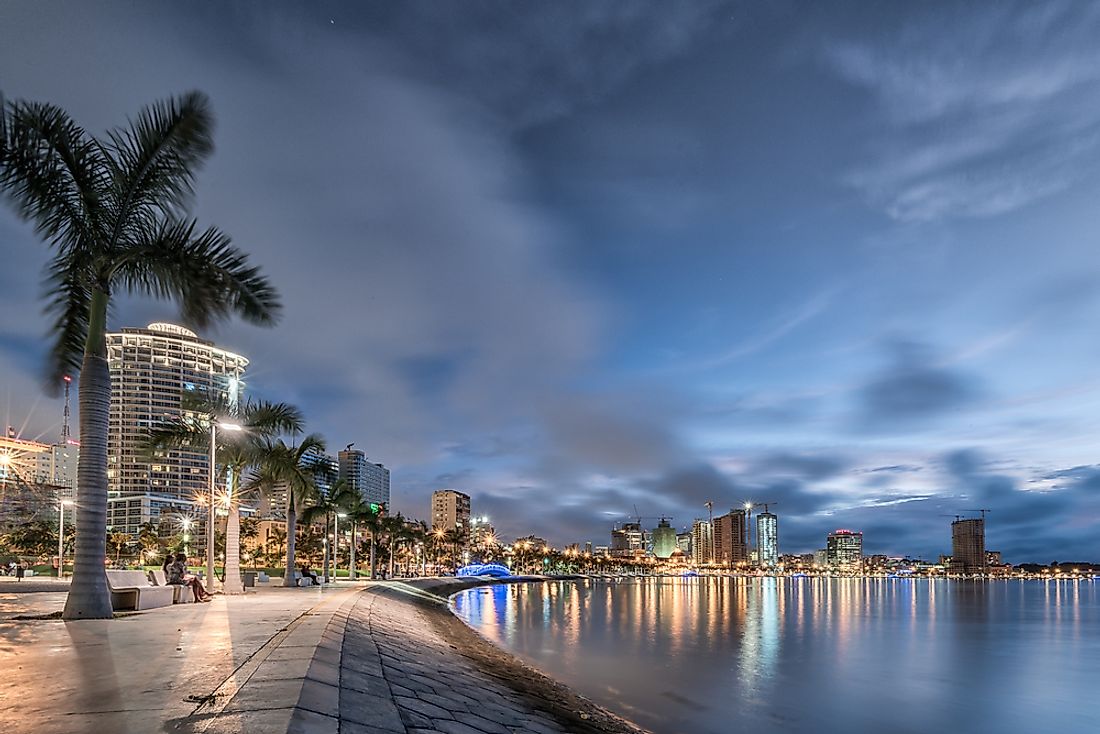What Is The Capital Of Angola?

Luanda is the most populous and capital city of Angola. The city, located on the shores of the Atlantic Ocean, hosts a population of about 6 million. It is the country’s chief seaport and also serves as Angola’s major industrial and cultural center. It is the world’s most populated Portuguese-speaking capital city.
How Did Luanda Become The Capital City Of Angola?
Luanda was founded by Paulo Dias de Novais, a Portuguese explorer, on January 25, 1576. A Hundred families and 400 settlers were the first to settle down in the area. Several forts were built in the city by the Portuguese. From 1550 to 1836, Luanda served as the center of the slave trade to Brazil. An economic revolution started in Luanda in the 19th century when the city emerged as one of the Portuguese Empire’s most developed cities outside of Europe. The port in Luanda became one of the world’s busiest ports and industry thrived in the city. Timber, ivory, coffee, cocoa, and several more products were exported from this city. Luanda thus became one of the most expensive cities in the world during the 19th century.
Thus, when Angola finally became independent in 1975, Luanda was already a well-developed, modern city and was designated as the capital of Angola. The city had a small but dominant white Portuguese population while the majority were Black Africans. When the Angolan Civil War began in 1975, most whites left the city to seek refuge in Europe. The natives lacked the necessary skills and education to keep the city running well. Also, immigration into the city from the less developed parts of Angola led to a rapid growth of slums in the city and an increase in unemployment rates, and poverty followed. It was only after the end of the civil war in 2002 that the profits from the oil and diamond trade once more boosted the economy of Luanda.
Climate Of The Capital City Of Angola
Luanda experiences a hot semi-arid climate. The temperature remains warm throughout the year and fog prevents the temperature from falling at night. Due to the influence of the cool Benguela Current, Luanda is extremely dry with June to October being the driest months. Maximum rainfall occurs in the months of March and April.
The Demographics Of The Capital Of Angola
Luanda is mainly inhabited by African ethnic groups but also has a significant population of ethnic Portuguese, Latin Americans (especially Brazilians), and a sizeable Chinese community. Portuguese is the official and most commonly spoken language of the city. Some indigenous Bantu languages are also spoken. The Bakongo, Ovimbundu, and Ambundu are the major African ethnic groups living in Luanda.
Luanda has experienced a dramatic increase in population in recent years but this rise has been accompanied by increased crime rates in the city due to higher poverty and unemployment levels.
Economy Of Angola’s Capital City
Luanda has a heavily oil-dependent economy. The city houses petroleum refineries and manufactures textiles, cement, cigarettes, beverages, etc. The natural harbor of the city serves as an important port of export of several items like diamonds, salt, iron, cotton, etc. Luanda also has a thriving building industry.
Despite the economic wealth, 53% of the city’s population is poor. Luanda houses nearly one-third of the population of the entire country. With such a high population, it becomes difficult to cater to the needs of the city people. Thus, health and hygiene facilities, safe drinking water, electricity, and other facilities are not adequate to cater to the needs of Luanda’s growing population. There is a huge gap in the lifestyle between those of the city’s rich and poor sections. The city is one of the most expensive ones for foreign residents as a heavy import tariff is levied on most imported products to encourage the domestic market to produce domestic goods.
Transport Infrastructure In Luanda
The capital of Angola is served by the Quatro de Fevereiro Airport, the largest in the country. The Luanda railway also starts from the city. Luanda is also home to the country’s largest port. However, the roads of the city are poorly developed and highly congested. Large-scale reconstruction projects have been launched by the government to improve the condition of the roads. Private taxis, minibuses, and suburban railway serves are the means of public transit in the city.







